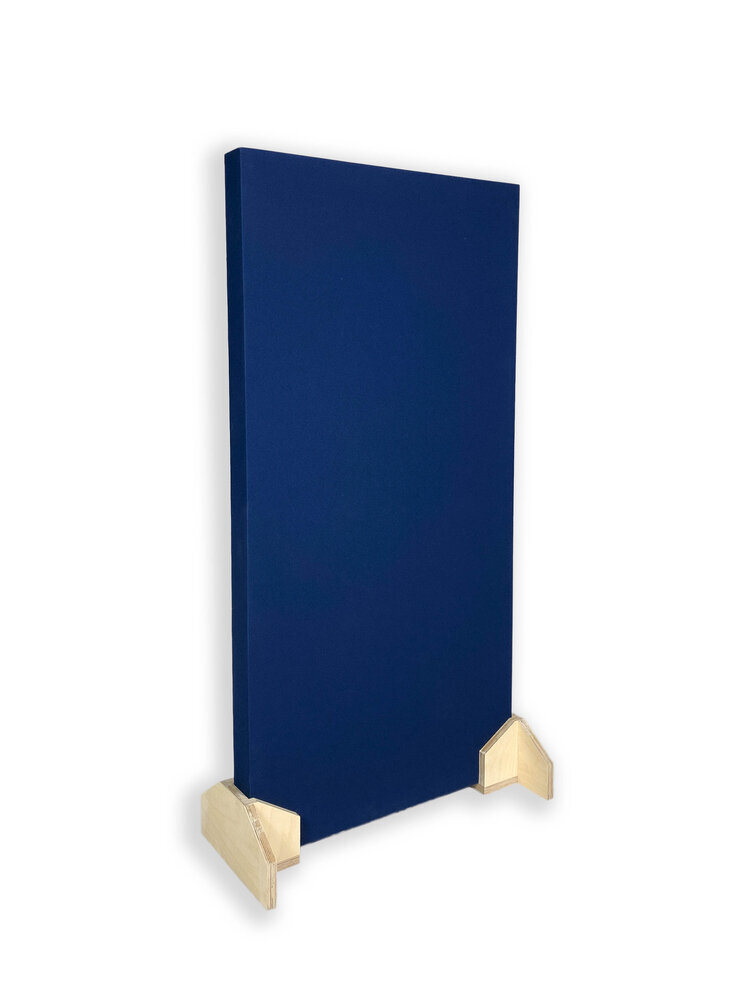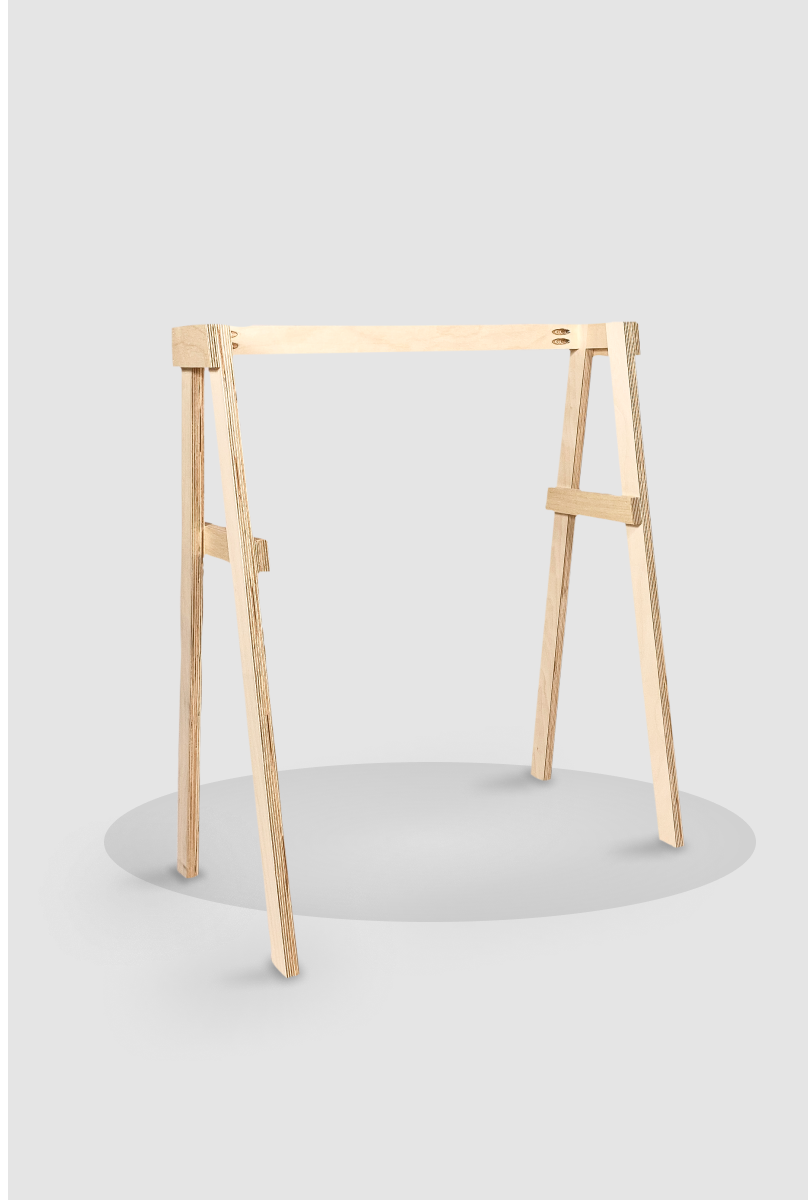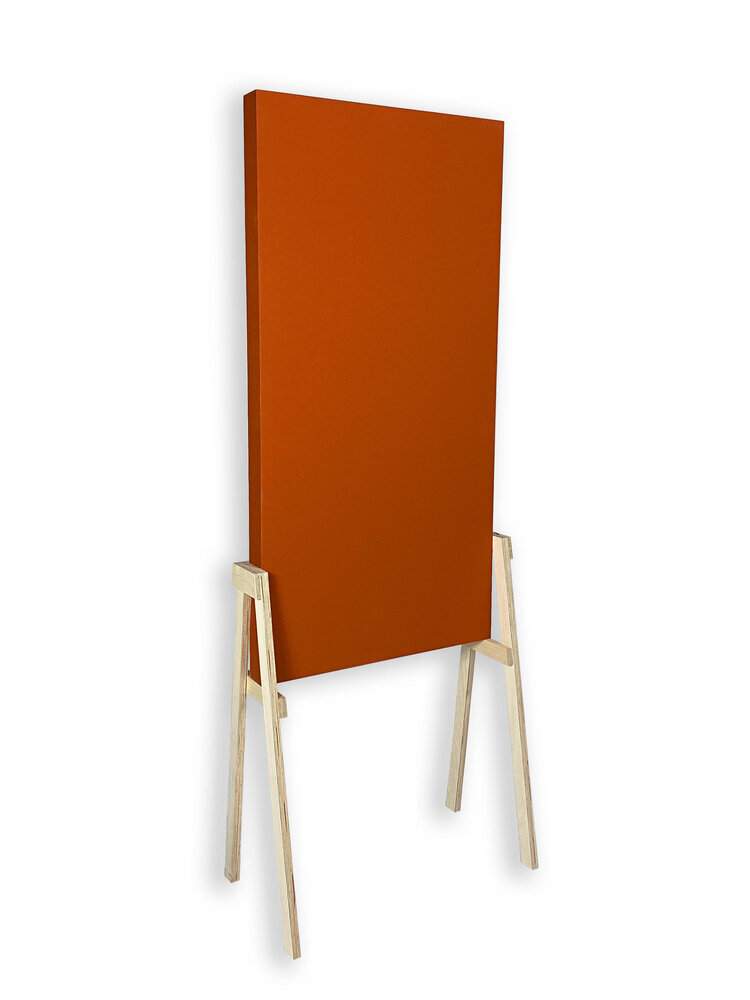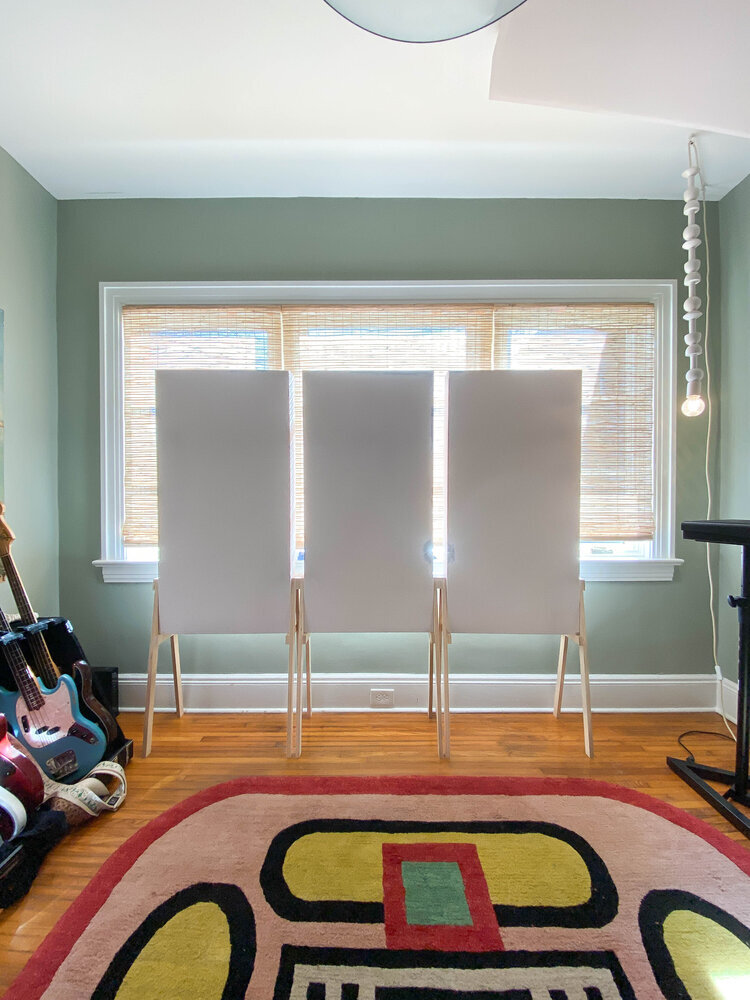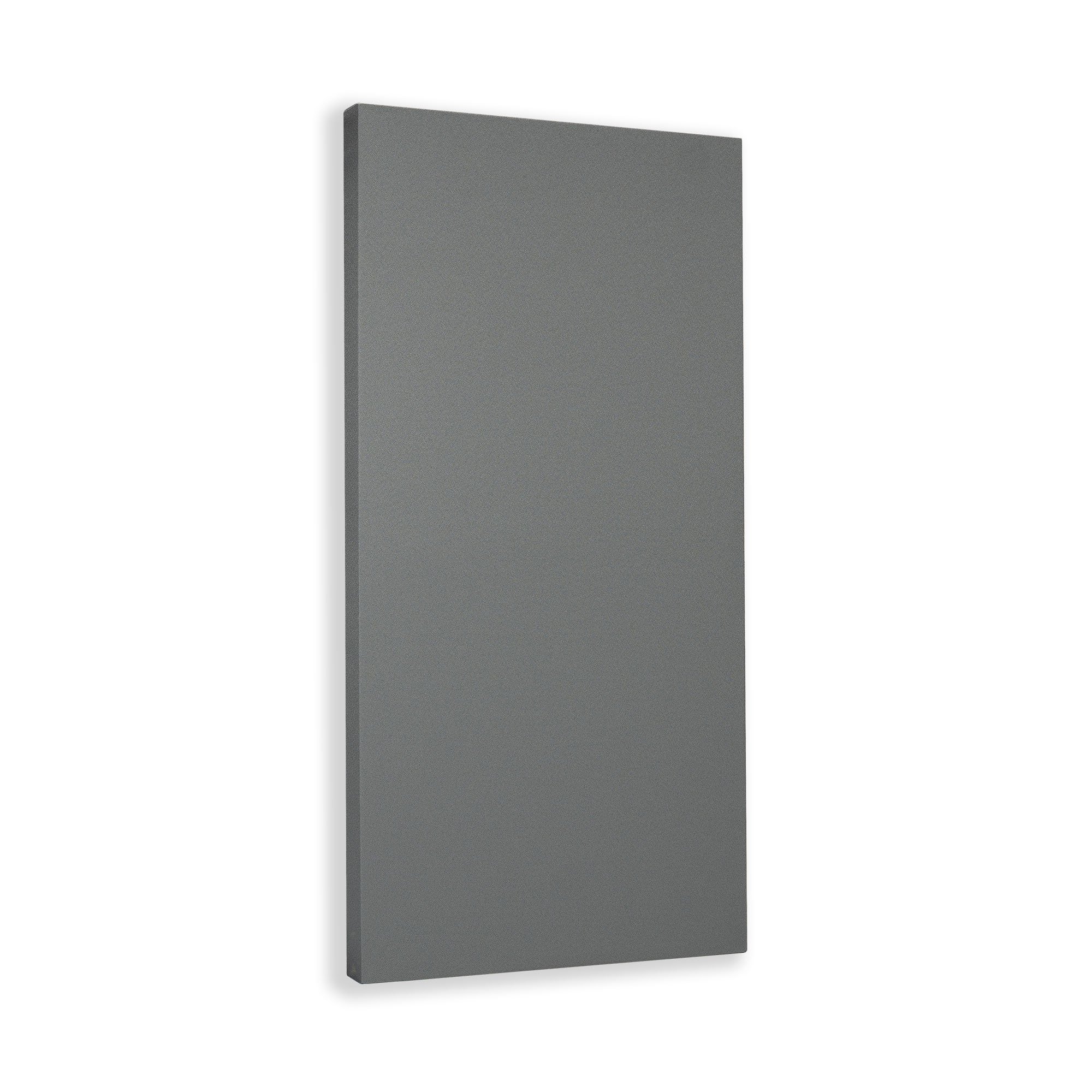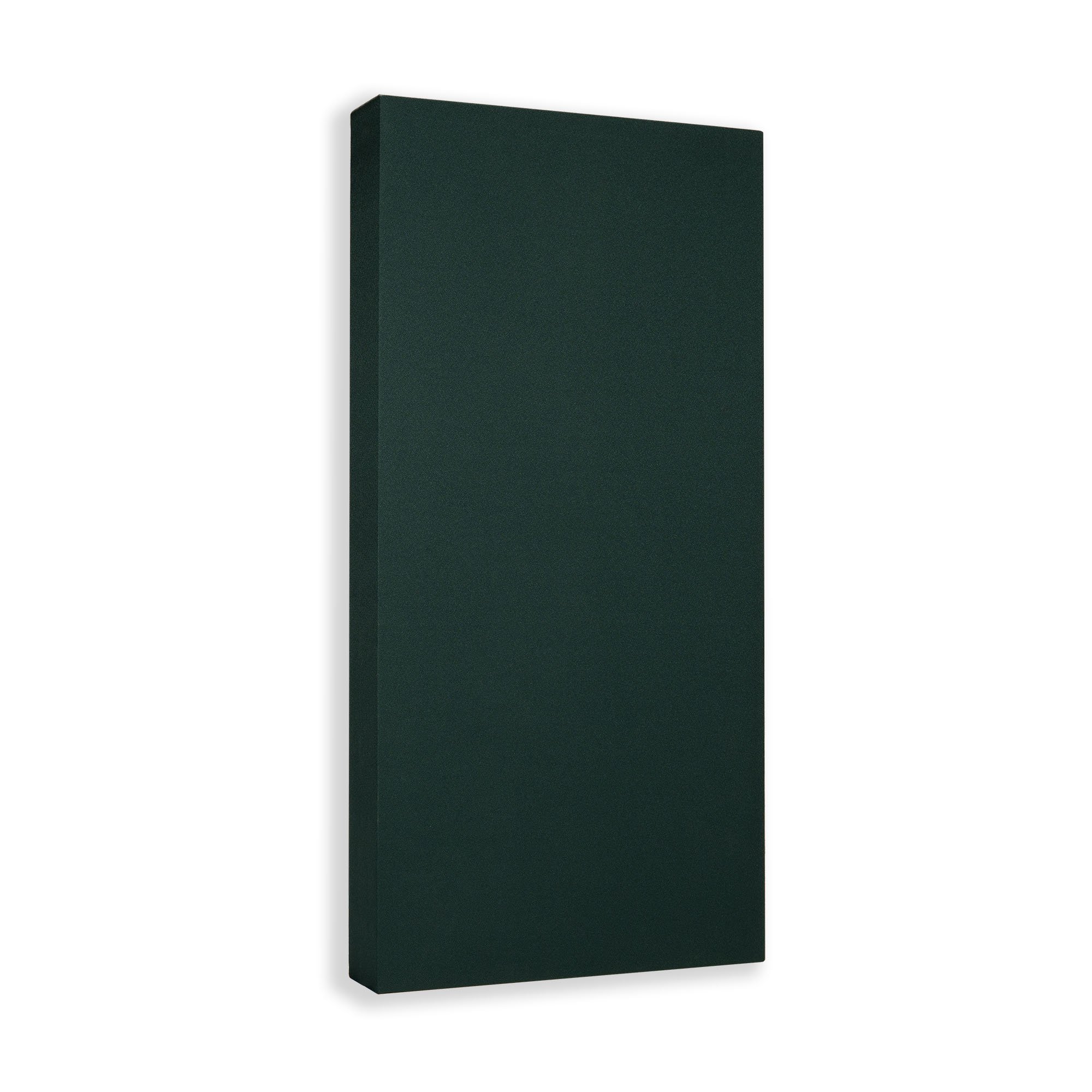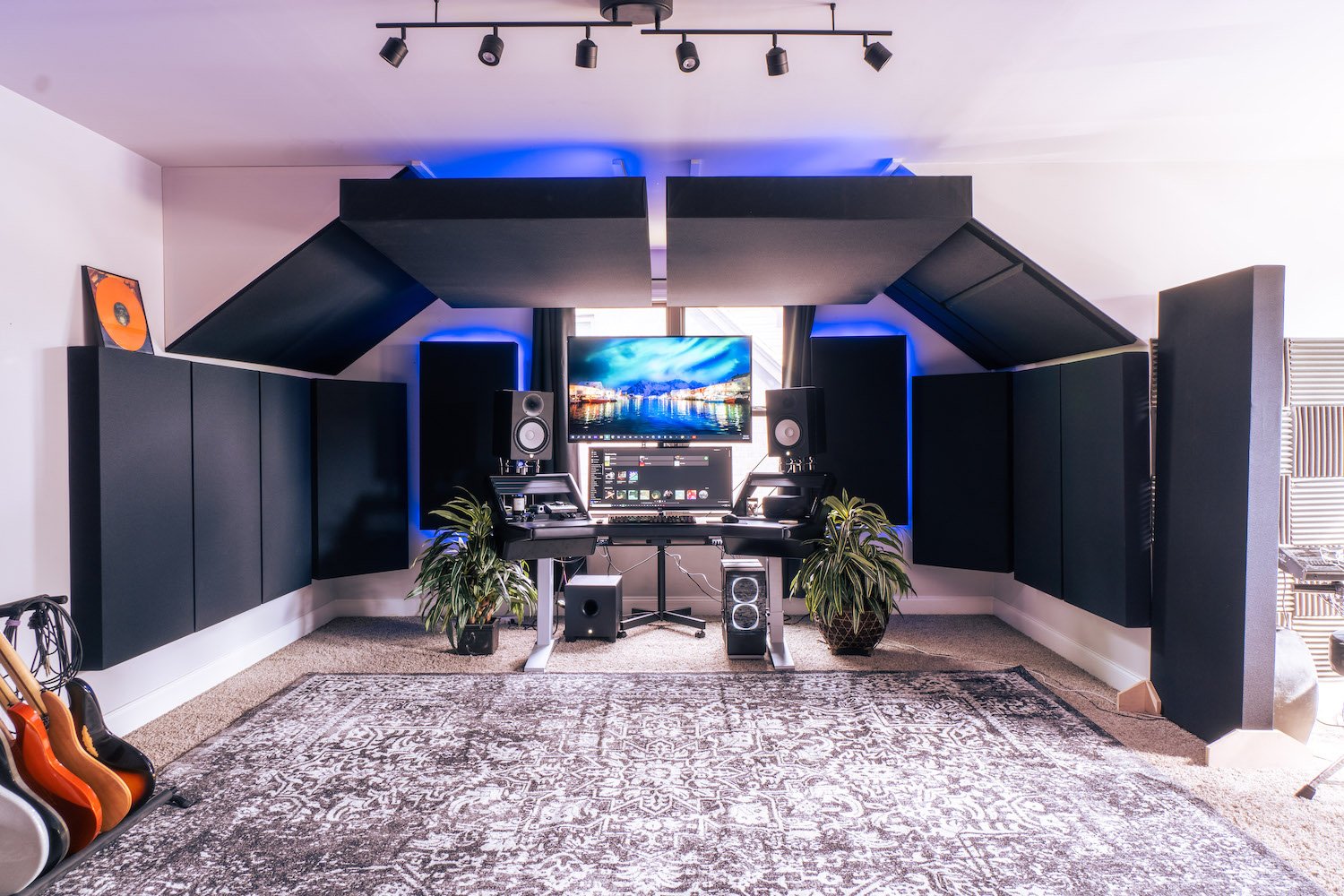Shop Acoustic
Treatment
Hand-made and hand-wrapped with Guilford of Maine and Burch fabric in Nashville, Tennessee. We build acoustic treatment panels to improve the listening and recording sound of rooms large and small. Our panels are perfect for home studios, churches, and any other space that needs better sound quality. If you need help picking panels, we offer free room advice!
Acoustic Treatment for Your Space
When you need a sleek and elegant way to control loud rooms, poor speech intelligibly, distracting background noise, echoes, and long reverb times, Low-Profile Acoustic Panels are a great option. Choose from 15 colors and four different sizes to ensure you solve your acoustic issues and maintain the perfect aesthetic for your space.
Low-Profile Acoustic Panels
Applications:
Restaurants
Offices
Lecture halls
Classrooms
Yoga and pilates studios
Gyms
The High-Mid Acoustic Panel minimizes early reflections, controls flutter echo and reduces decay and reverb times across a variety of different spaces. Found in recording studios, houses of worship, gyms and more, it’s the most versatile acoustic treatment, and for good reason.
High-Mid Acoustic Panels
Applications:
Listening rooms
Home studios
Recording studios
Home theaters
Venues
Houses of worship
Gyms
The true control freak in the room. 4.5 inches deep for excellent absorption from the top of the frequency spectrum all the way down to 100Hz, and excels at minimizing SBIR issues and preventing muddy sounding low-mid build-ups. Your home studio, listening room and recording studio are in good hands with these panels.
Broadband Acoustic Panels
Applications:
Recording studios
Listening rooms
Home theaters
Venues
Houses of worship
What are acoustic panels?
Acoustic panels are specially designed structures made to absorb sound waves, particularly mid-to-high frequencies. Their main goal is to reduce unwanted noise, control reverberation, and improve sound clarity within a space. They help "tame" the sound environment by minimizing echo and preventing sound from bouncing uncontrollably around a room.
Typically, acoustic panels consist of:
A core absorbent material: Commonly made from mineral wool, fiberglass, foam, or recycled materials.
A frame: Often wooden or metal, which gives the panel structure.
A fabric covering: A breathable textile that allows sound waves to penetrate to the absorbent core.
They are most often used in recording studios for control rooms, mixing rooms and mastering rooms for a critical listening environment, but can also be installed in offices and gyms for increased productivity, or restaurants, houses of worship, and venues for increased speech intelligibly.
Note: Acoustic panels are often incorrectly called “soundproofing panels,” but they’re not the same.
Acoustic panels improve sound within a room by reducing echo and enhancing clarity.
Soundproofing blocks sound between rooms to prevent noise from entering or escaping.
Use acoustic panels to make a room sound better inside, and soundproofing to keep sound in or out.
How do acoustic panels work?
Acoustic panels work by absorbing sound energy instead of reflecting it. When sound waves hit the panel’s surface, they pass through the fabric and enter the absorbent core. The material inside traps the energy of the sound waves, converting it into a small amount of heat (through friction), thereby reducing the amount of sound that reflects back into the room.
Depending on the size and purpose of your space, acoustic treatment often involves using panels of various sizes and thicknesses to target specific acoustic issues, and placement is key to ensure echoes, flutter and reverb times are being properly mitigated.
FAQs
Common questions we get asked about acoustics!
-
Acoustic panels are intended to make a space sound better by absorbing unwanted sounds. Soundproofing, on the other hand, is intended to prevent sound from entering or escaping a space. Soundproofing is typically achieved through the use of thicker walls and doors, as well as special sealants and insulation. Acoustic panels can be used in conjunction with soundproofing measures to further improve the sound quality of a space.
-
If you're looking for an easy and effective way to improve the sound quality in your room, acoustic panels are a great option. These lightweight panels can be quickly and easily mounted to walls or ceilings, and they work to absorb excess sound waves, resulting in cleaner, clearer audio.
There are a few different types of acoustic panels available on the market, so it's important to choose the right ones for your needs. If you're not sure where to start, our team of experts can help you find the perfect acoustic panels to achieve optimal results. Get some free room advice! -
Acoustic panels work to reduce noise by absorbing sound waves. This will help to reduce echoes or deadpan sounds in the space. It is important to note that acoustic panels will not completely block out sound, but they will help to reduce the noise level. Think of acoustic panels as cleaning up the audio for a cleaner listening experience.
-
Acoustic panels and bass traps both serve to improve sound quality in a room by absorbing sound waves, but they target different frequency ranges and serve distinct purposes.
Acoustic panels are designed to absorb mid to high frequencies, helping to reduce echoes, flutter, and general reverberation. These panels are typically thinner (1"–4"), made from materials like fiberglass or Rockwool, and are mounted on walls or ceilings at reflection points to improve clarity and speech intelligibility.
Bass traps, on the other hand, are built to absorb low-frequency sounds (bass), which cause boominess or uneven bass response in your room. They are thicker and denser (6” - 8”) than standard acoustic panels and can be placed anywhere a thinner panel can be placed, but with the added benefit of increased low end control, especially when installed with an air gap. Bass traps are essential for balancing the low-end, making them a vital component in recording studios, home theaters, or any treated room where critical listening is the focus.
-
There are a few variables at play when determining how many acoustic panels you need for your space, such as:
Room Dimensions
The size of your room plays a major role in determining how many panels are necessary. Larger rooms will naturally require more coverage to achieve effective sound absorption, while smaller rooms can often be treated with fewer panels.
As a general guideline:
Small rooms (under 150 sq ft): 6–10 panels
Medium rooms (150–300 sq ft): 10–18 panels
Large rooms (300+ sq ft): 18+ panels
Ceiling height also matters — high ceilings mean more sound reflection and might require cloud panels or additional wall coverage.
Room Purpose
The function of the room influences how much acoustic treatment you need, and where to place it:
Offices & Conference Rooms: The goal is to reduce echo and improve speech intelligibility. You may only need 30–50% wall coverage.
Home Theaters or Listening Rooms: Balanced absorption and diffusion are key. Front, rear, and side walls are common targets. Bass traps in corners are also recommended.
Recording Studios & Control Rooms: Precision is crucial here. You'll likely need higher coverage — at least 50–75% of reflection points treated, plus bass trapping.
Gyms or Large Open Spaces: These spaces can have long reverb times due to hard surfaces. Treatment focuses on reducing overall echo, often with ceiling baffles or larger format panels.
Budget
How much are you able to spend on treating your room?
Acoustic treatment can get expensive, but if budget is a concern, don’t worry! You can still dramatically improve the sound in your space with a more minimal setup by:
Careful placement of fewer panels — prioritize first reflection points, and wall areas opposite sound sources.
Starting small and expanding — even 4–6 strategically placed panels can make a noticeable difference.
Choosing multipurpose treatments — bass traps that also absorb mid/high frequencies or art panels that double as decor.
No matter what kind of space you have, we’re happy to provide FREE room advice to help you figure out the perfect amount of treatment that works within your budget.
-
Installing acoustic panels might seem a little daunting, but all you need is a screwdriver, measuring tape, and a level!
Wall Mounting: Our panels come with 2” or 4” Z-Clips for a secure, flush mount. Just screw one half into the wall, the other into the panel, and slide them together.
Ceiling Mounting: For overhead installations, we offer a Ceiling Mounting Kit that includes everything you need for a safe and clean setup.
Need Help? We have detailed install guides available here for all of our panels.
Fill out our FREE Room Advice Form for personalized installation tips and we’ll answer any additional questions you might have. And if you're in the Nashville area, we offer professional installation services too!
-
Where you place your acoustic panels is very important, especially in studios, where critical listening is the main focus.
The main thing to consider are the first reflection points in the room, where sound waves reflect and create an echo or reverb, so placing panels on the following reflection points is key (in order of importance):
Side Walls: Placing panels at ear level on the side walls will absorb early reflections that reach the listener's ears.
Ceiling: Ceiling panels can reduce reflections from the ceiling, especially in rooms with high ceilings.
Front and Rear Walls: Panels on the front wall behind speakers and on the rear wall can absorb early and late reflections, respectively.
Corners: Corners are prone to sound reflections due to the way sound waves bounce off intersecting surfaces.
You also want to make sure your panels are as even spaced as possible to achieve the best echo reduction.
Don’t place all the panels on one side of the room! Make sure when you place a panel on one wall, there’s another panel being placed on the other wall across from it.
We’re happy to answer any questions you might have about your space. Fill out our FREE Room Advice Form for personalized installation and placement advice. And if you're in the Nashville area, we offer professional installation services too!
-
The thicker an acoustic panel is, the more effective it is at absorbing low frequencies.
For a space like a busy restaurant or an office where you won’t have a lot of low frequency buildup, thinner panels like our (1.5” thick) Low-Profile Acoustic Panels will shine at mitigating reflections caused by lots of speech.
For a studio space where you need the most accurate listening environment possible, you want to tame the bass frequencies with thick traps, ideally 6” deep or more. Our Bass Trap panels excel at providing excellent absorption down to 120hz and installed with an air gap, that range is increased to 60hz.
-
Yes! We can make acoustic panels of all shapes and sizes, as well as panels with your custom artwork! Reach out to us at hello(@)musiccityacoustics.com or fill out our FREE Room Advice Form and tell us more about your space and we’ll develop a tailored acoustic treatment plan for you!
Not sure how to treat the acoustics of your room?
Get free acoustic room advice for YOUR space. No matter what kind of room, listening room, home theater, studio, church, office, or restaurant. You name the room, we can help you treat the acoustics!




